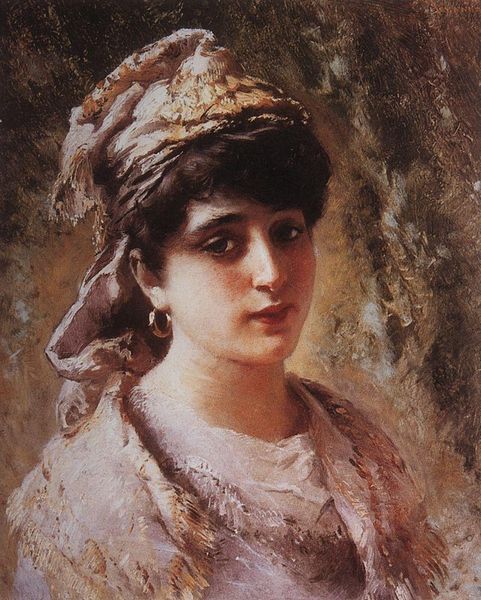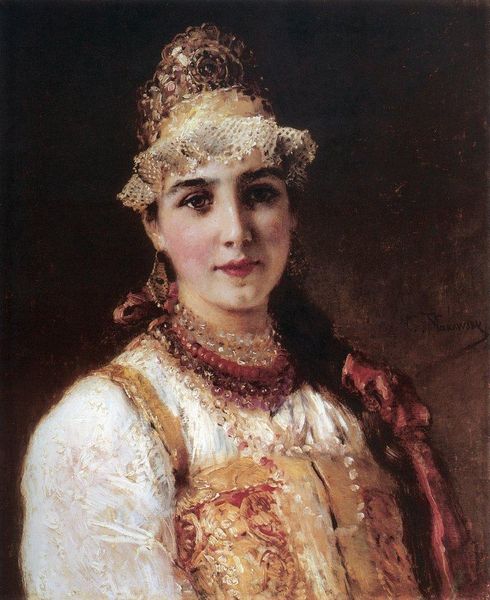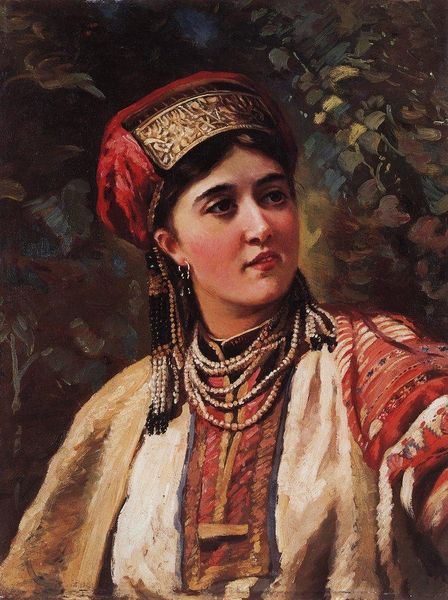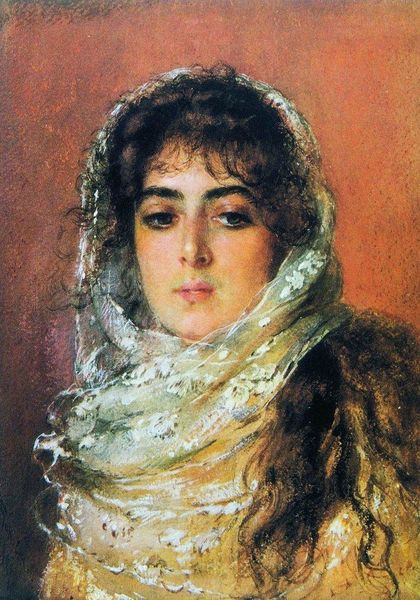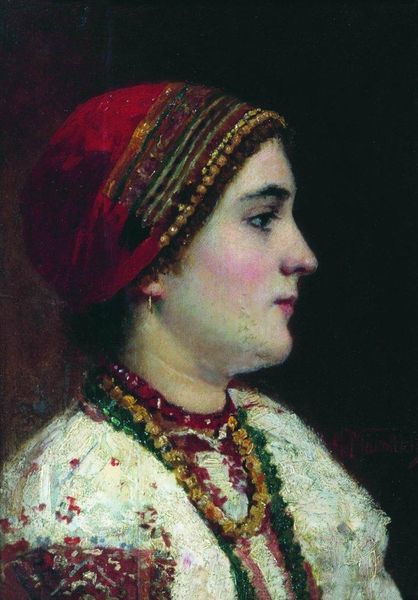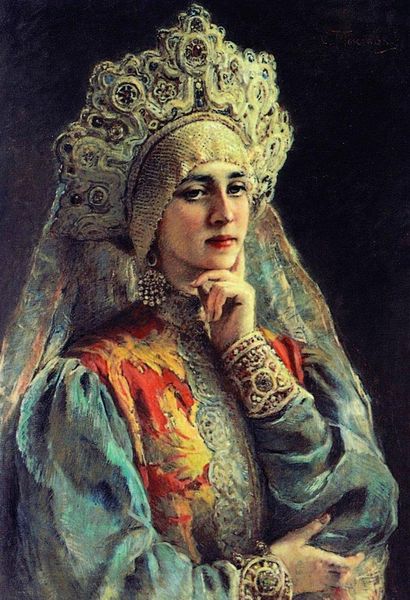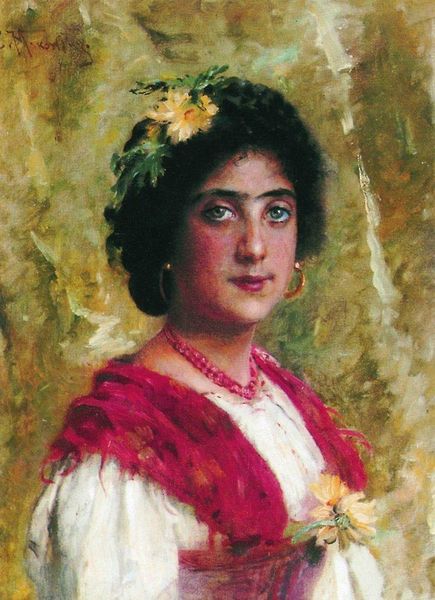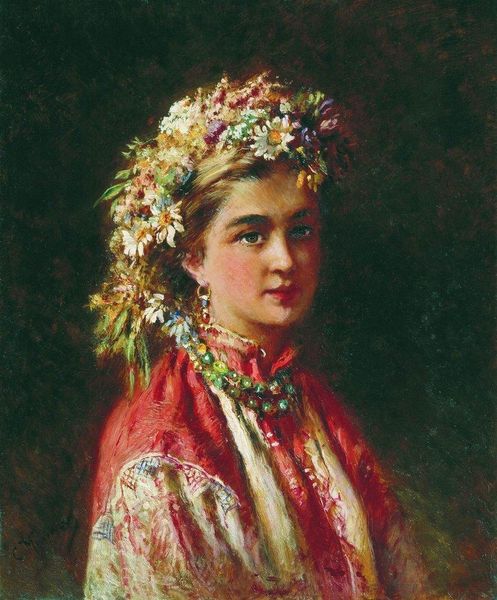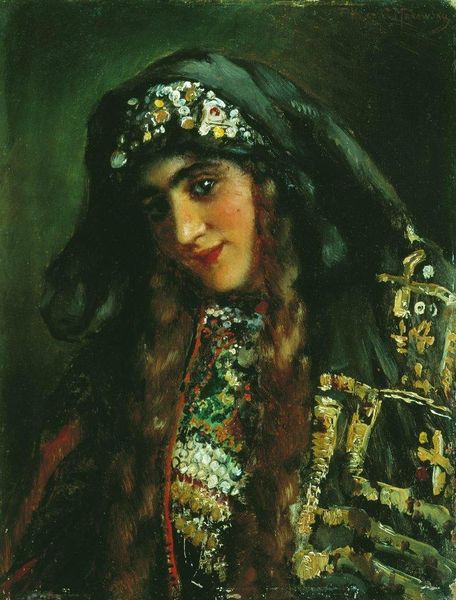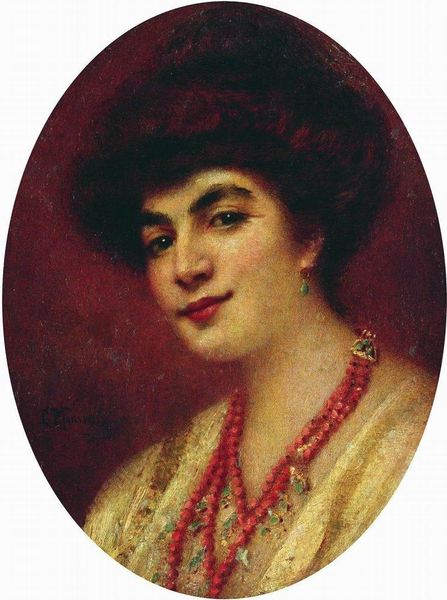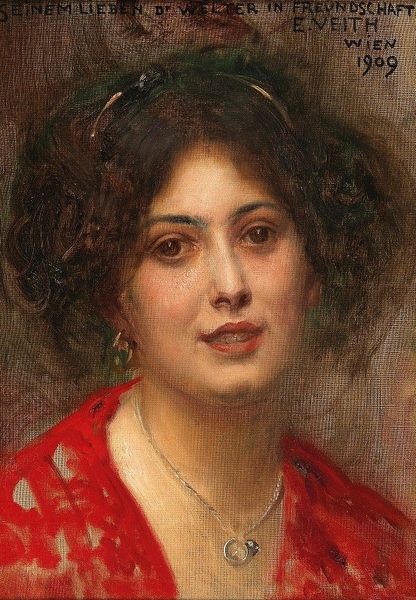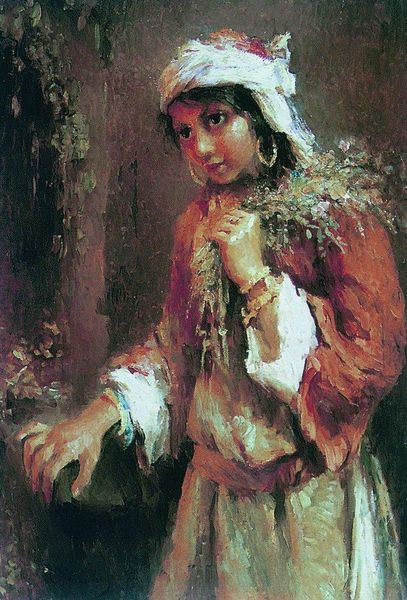
painting, oil-paint
#
portrait
#
painting
#
oil-paint
#
romanticism
#
orientalism
#
history-painting
#
realism
Copyright: Public domain
Curator: Let's consider this painting attributed to Konstantin Egorovich Makovsky, known simply as "Female Portrait". Makovsky, a Russian artist, moved through academic art into focusing on romanticized depictions of history and what we might today critically consider Orientalist themes. Editor: She certainly has an arresting gaze. There’s something captivating, and slightly melancholic, about her expression. And the way the light catches on her jewelry… it draws you in. I’m struck by the texture too; you can almost feel the fabrics. Curator: That textural detail is key, reflecting Makovsky's pivot towards Realism, but also speaks to the 19th-century appetite for exoticism. Notice the details in her headdress and clothing. While seemingly realistic, they likely draw upon imagined rather than accurate representations of specific cultures. Editor: True, that red robe practically vibrates with energy. Look at the way the artist has used the oil paint. You can see individual brushstrokes layering upon each other. I'm thinking about where this red pigment would have originated. Sourcing, grinding... all the labour that results in such a vivid hue. It suggests a richness and a deep connection to materials. Curator: And the reception of those very materials speaks to cultural power. Remember, these representations of the "Orient" often served to justify European colonialism and reinforce existing power dynamics. Consider who had access to view this art and the assumptions they might have held about the woman depicted. The romantic style perpetuates a vision and a history of dominance and "otherness". Editor: Absolutely. By understanding the labor and origins of the pigments and fabric portrayed, as well as who had access to owning these resources in reality versus on a canvas, we question these constructions. Curator: So this portrait isn't just about beauty; it's an invitation to reflect on the complexities of cultural representation, class, and historical context. Editor: It makes me think differently about the artwork – about the making and meaning embedded in every layer of the painting.
Comments
No comments
Be the first to comment and join the conversation on the ultimate creative platform.
